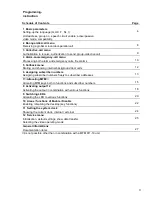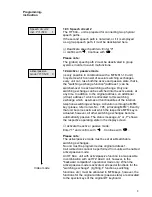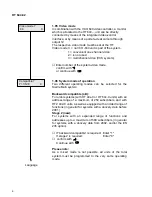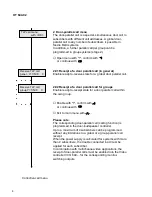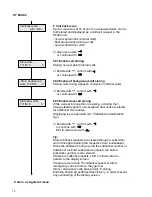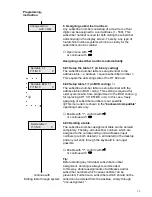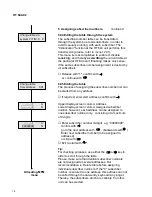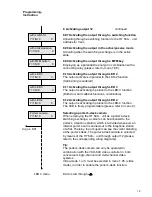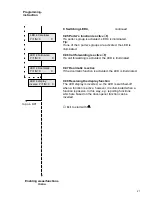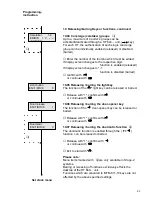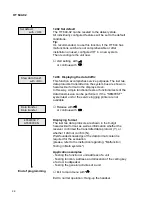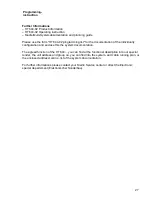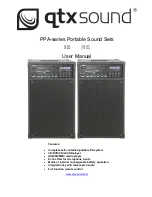
13
Programming-
instruction
6 Assigning subscriber numbers
Any subscriber number consisting of a maximum of four
digits can be assigned to a unit address (1 - 500). This
subscriber number is used for both calling the subscriber
and showing in the display screen. Thereby, any type of
hierarchical number-systems which are clearly for the
subscribers can be created.
⇒
Open menu with
or continue with
Assigning subscriber-numbers automatically
6.01 Setup the table 1:1 (in binary coding)
The subscriber-number table is setup identical to the
address table, i.e. address 1 equals subscriber number 1.
This equals the delivering state of the HT 644 unit.
∗
)
6.02 Setup table 1:1 (in BCD coding)
∗
The subscriber-number table is setup identical with the
address table in BCD coding. This setting is required for
older systems which are programmed in the BCD code (e.g.
for replacing a HT 311/351MC unit). In this case, freely
assigning of subscriber-numbers is not possible.
∗
)
This menu item is shown in the "
backward compatible
"
operating mode only.
⇒
Enable with "1", confirm with
or continue with
.
6.03 Deleting a table
The subscriber-number-assignment table can be deleted
completely. Thereby, all subscriber numbers which are
assigned to the corresponding unit addresses (input
numbers) are both deleted (i.e. eliminated) in the desktop
and any call entry through the keyboard is no longer
possible.
⇒
Enable with "1", confirm with
or continue with
continue with
Editing table through system
Tip:
Before starting any individual subscriber-number
assignment, deleting is always recommended.
In this way, double assignments of addresses and/or
subscriber numbers which cause conflicts can be
prevented. Furthermore, subscribers which should not be
called can be deleted from the desktop, simply through
"non-assignment ".
Delete table ?
Y=1/N=0 0
Set table BCD 1:1
Y=1/N=0 0
Change call no.
with <OK>
Set table 1:1
Y=1/N=0 0




